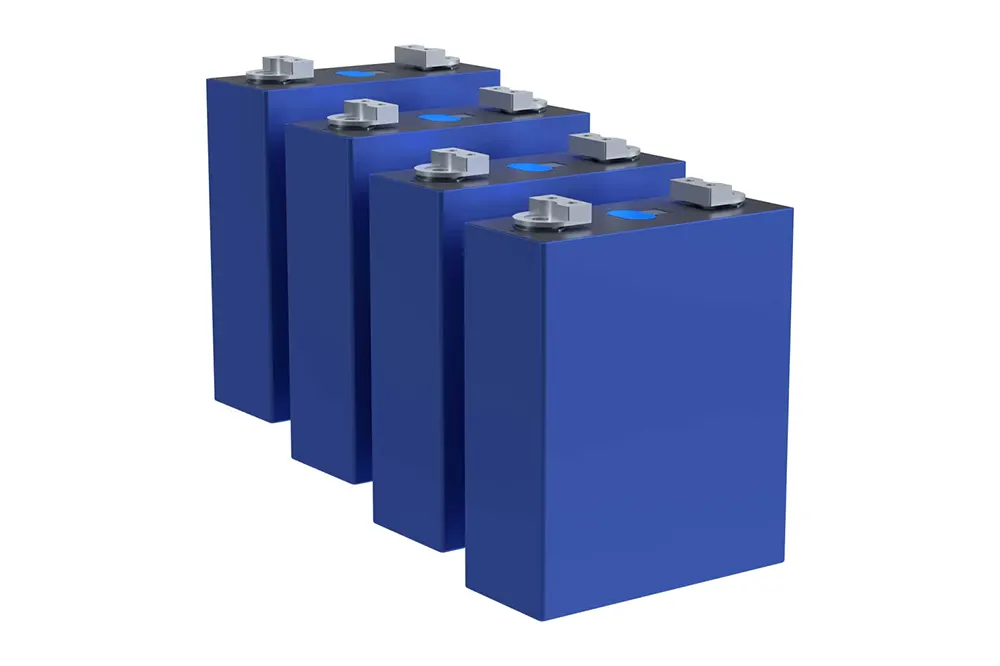Table of Contents
- Overview of LiFePO4 Battery Voltage
- What is a LiFePO4 Voltage Chart?
- 3.2V LiFePO4 Battery Charging and Discharging Functionality
- 12V LiFePO4 Cell Charging and Discharging Voltage Chart
- 24V LiFePO4 Cell Charging and Discharging Voltage Chart
- 36V LiFePO4 Cell Charging and Discharging Voltage Chart
- 48V LiFePO4 Cell Charging and Discharging Voltage Chart
- What is the relationship between the state of charge (SOC) and the voltage of the SOC?
- Charge State Curve
- Lithium iron phosphate battery charging parameters
- Discharge Curve of LiFePO4 Battery
- Factors Influencing Battery State of Charge (SoC)
- What is the capacity range of lithium iron phosphate batteries?
- Comparison of Parameters between LiFePO4 and Lithium-ion (Li-ion) Batteries
- Visual Energy Structure and Working Principle of LiFePO4 Battery
- How to Measure the Capacity of a LiFePO4 Battery
- Cycle Life and Factors Affecting LiFePO4 Battery
- How to Increase The LiFePO4 Battery Lifespan?
- Conclusion
Overview of LiFePO4 Battery Voltage
Lithium Iron Phosphate (LiFePO4) batteries are favored in the fields of electric bicycles, electric vehicles, forklifts, marine applications, AGVs, and floor sweepers due to their high energy density, long cycle life, and high safety. Lifepo4 batteries have become the preferred choice for high-performance applications due to their excellent performance. They offer stable voltage, consistent power output, and a wide operating temperature range. This article focuses on the voltage chart of Lifepo4 batteries and Lifepo4 vs. NMC (Nickel Manganese Cobalt).
What is a LiFePO4 Voltage Chart?
A LiFePO4 battery voltage chart typically shows the discharge curve specific to LiFePO4 batteries. The voltage varies according to the capacity from 100% to 0%.
| SOC | 12V | 24V | 36V | 48V | 100% Charge |
|---|---|---|---|---|---|
| 100% | 3.65V | 14.6V | 29.2V | 43.8V | 58.4V |
| 100% Rest | 3.4V | 13.6V | 27.2V | 40.8V | 58.4V |
| 90% | 3.35V | 13.4V | 26.8V | 40.2V | 53.6V |
| 80% | 3.32V | 13.28V | 26.56V | 39.84V | 53.12V |
| 70% | 3.3V | 13.2V | 26.4V | 39.6V | 52.8V |
| 60% | 3.27V | 13.08V | 26.16V | 39.24V | 52.32V |
| 50% | 3.26V | 13.04V | 26.08V | 39.12V | 52.16V |
| 40% | 3.25V | 13V | 26V | 39V | 52V |
| 30% | 3.22V | 12.88V | 25.76V | 38.64V | 51.52V |
| 20% | 3.2V | 12.8V | 25.6V | 38.4V | 51.2V |
| 10% | 3V | 12V | 24V | 36V | 48V |
| 0% | 2.5V | 10V | 20V | 30V | 40V |
LiFePO4 Battery Discharge Cutoff Voltage: 2.5V
LiFePO4 Battery Float Charge Voltage: 3.65V
LiFePO4 Battery Nominal Voltage: 3.2V
3.2V LiFePO4 Battery Charging and Discharging Voltage Chart

12V LiFePO4 Cell Charging and Discharging Voltage Chart
12V 100Ah LiFePO4 batteries provide a significant upgrade over traditional 12V lead acid batteries. They are highly regarded as one of the safest options for off-grid solar systems. When fully charged, the battery voltage reaches 14.6V, while it drops to 10V when fully discharged. The following voltage chart illustrates the voltage decline in relation to the battery's capacity for a 12V LiFePO4 battery:
| Capacity | Battery Voltage |
|---|---|
| 100% | 14.6V |
| 90% | 13.4V |
| 80% | 13.28V |
| 70% | 13.2V |
| 60% | 13.08V |
| 50% | 13.04V |
| 40% | 13V |
| 30% | 12.88V |
| 20% | 12.8V |
| 10% | 12V |
| 0% | 10V |

LiFePO4 Battery Discharge Cutoff Voltage: 10V
LiFePO4 Battery Float Charge Voltage: 14.6V
LiFePO4 Battery Nominal Voltage: 12.8V
24V LiFePO4 Cell Charging and Discharging Voltage Chart
| Capacity | Battery Voltage |
|---|---|
| 100% | 29.2V |
| 90% | 26.4V |
| 80% | 26.16V |
| 70% | 26V |
| 60% | 25.76V |
| 50% | 25.6V |
| 40% | 25.2V |
| 30% | 24.96V |
| 20% | 24.8V |
| 10% | 24V |
| 0% | 20V |

LiFePO4 cell Discharge Cutoff Voltage: 20V
LiFePO4 cell Float Charge Voltage: 29.2V
LiFePO4 cell Nominal Voltage: 25.6V
36V LiFePO4 Cell Charging and Discharging Voltage Chart
You can either purchase a 36V LiFePO4 battery or acquire three identical 12V LiFePO4 batteries and connect them in series. When fully charged, these batteries reach a voltage of 43.8V and drop to 30V during discharge.
| Capacity | Battery Voltage |
|---|---|
| 100% | 43.8V |
| 90% | 39.6V |
| 80% | 39.48V |
| 70% | 39.2V |
| 60% | 38.88V |
| 50% | 38.4V |
| 40% | 38V |
| 30% | 37.44V |
| 20% | 37.2V |
| 10% | 36V |
| 0% | 30V |

LiFePO4 Battery Float Charge Voltage: 43.8V
LiFePO4 Battery Nominal Voltage: 38.4V
48V LiFePO4 Cell Charging and Discharging Voltage Chart
In larger solar power systems, 48V batteries are commonly utilized. These high-voltage solar systems effectively keep the amperage low, resulting in significant savings on equipment and wiring expenses.
| Capacity | Battery Voltage |
|---|---|
| 100% | 58.4V |
| 90% | 52.8V |
| 80% | 52.32V |
| 70% | 52V |
| 60% | 51.52V |
| 50% | 51.2V |
| 40% | 50.4V |
| 30% | 49.92V |
| 20% | 49.6V |
| 10% | 48V |
| 0% | 40V |

LiFePO4 Battery Discharge Cutoff Voltage: 40V
LiFePO4 Battery Float Charge Voltage: 58.4V
LiFePO4 Battery Nominal Voltage: 51.2V
What is the relationship between the state of charge (SOC) and the voltage of the SOC?
The relationship between State of Charge (SoC) and voltage for LiFePO4 batteries is as follows:
SoC (State of Charge) represents the charging level of a battery relative to its capacity. SoC is typically expressed as a percentage, where 0% represents empty or discharged, and 100% represents full or charged. Another related measurement is Depth of Discharge (DoD), which is calculated as 100 - SoC (100% represents full, 0% represents empty). SoC is commonly used when discussing the current state of the battery during use, while DoD is often used when discussing the battery's lifespan after repeated cycles.
Due to the non-linear relationship between SoC and voltage, the battery management system (BMS) intervenes to prevent over-discharge when the battery reaches a low SoC (close to 0%). Similarly, the charging process slows down as the battery approaches a high SoC (close to 100%) to protect the battery.
The table below shows the voltage range for LiFePO4 batteries:
| State of Charge (SoC) | Voltage per Cell | Voltage for 4-Cell Battery Pack |
|---|---|---|
| 0% | 2.5V | 10V |
| 10% | 3.2V | 12.8V |
| 20% | 3.4V | 13.6V |
| 30% | 3.5V | 14V |
| 40% | 3.6V | 14.4V |
| 50% | 3.7V | 14.8V |
| 60% | 3.8V | 15.2V |
| 70% | 3.9V | 15.6V |
| 80% | 4.0V | 16V |
| 90% | 4.1V | 16.4V |
| 100% | 4.2V | 16.8V |
| State of Charge (SoC) | Voltage (V) |
|---|---|
| 100% | 3.60-3.65V |
| 90% | 3.50-3.55V |
| 80% | 3.45-3.50V |
| 70% | 3.40-3.45V |
| 60% | 3.35-3.40V |
| 50% | 3.30-3.35V |
| 40% | 3.25-3.30V |
| 30% | 3.20-3.25V |
| 20% | 3.10-3.20V |
| 10% | 2.90-3.00V |
| 0% | 2.00-2.50V |
Charge State Curve
Voltage: The higher the nominal voltage of the battery, the more fully charged it becomes. For example, a LiFePO4 battery with a nominal voltage of 4V is considered significantly maximized when it reaches a voltage of 3.65V.
Coulomb Counter: It measures the flow of current into and out of the battery and quantifies the battery's charging and discharging rates in units of ampere-seconds (As).
Specific Gravity: You will need a hydrometer to measure SoC. It works by measuring the density of a liquid based on buoyancy.

Lithium iron phosphate battery charging parameters
Here are the charging parameters for LiFePO4 batteries, including different voltage types such as charging voltage, float voltage, maximum voltage/minimum voltage, and nominal voltage. The table below provides the charging parameters for LiFePO4 batteries with voltages of 3.2V, 12V, 24V, 36V, and 48V.
| Nominal Voltage | Charging Voltage | Float Voltage | Maximum Voltage | Minimum Voltage |
|---|---|---|---|---|
| 3.2V | 3.65V | 3.50V | 3.80V | 2.00V |
| 12V | 14.6V | 13.8V | 15.6V | 8.00V |
| 24V | 29.2V | 27.6V | 31.2V | 16.00V |
| 36V | 43.8V | 41.4V | 46.8V | 24.00V |
| 48V | 58.4V | 55.2V | 62.4V | 32.00V |
Discharge Curve of LiFePO4 Battery
Discharge refers to the process of extracting electrical energy from a battery to power electronic devices. A discharge curve of a battery typically represents the relationship between voltage and discharge time. The graph below shows the discharge curves of a 12V LiFePO4 battery at different discharge rates.

Factors Influencing Battery State of Charge (SoC)
The factors influencing the state of charge (SoC) of a battery can be categorized into temperature, materials, application, and maintenance.
- Battery Temperature: If the battery operates at excessively high or low temperatures, it can reduce the charging efficiency and affect the SoC.
- Battery Materials: Different battery chemistries utilize different materials, which can impact the SoC.
- Battery Application: Various application scenarios or purposes can also influence the SoC.
- Battery Maintenance: Improper battery maintenance can adversely affect the battery's lifespan and SoC.
What is the capacity range of lithium iron phosphate batteries?
The capacity range of LiFePO4 batteries varies depending on the specific model and manufacturer. Common capacities for LiFePO4 batteries include 4Ah, 10Ah, 20Ah, 50Ah, 100Ah, 150Ah, and so on. Increasing the number of LiFePO4 batteries connected in parallel will result in higher overall capacity. Additionally, increasing the number of LiFePO4 batteries connected in series will increase the overall voltage of the battery pack.
Comparison of Parameters between LiFePO4 and Lithium-ion (Li-ion) Batteries
| Parameter | NMC (Nickel Manganese Cobalt) | LFP (Lithium Iron Phosphate) |
|---|---|---|
| Nominal Voltage | 3.6V | 3.2V |
| Charging Voltage | 4.2V | 3.65V |
| Minimum Voltage | 2.5V | 2.5V |
| Maximum Voltage | 4.2V | 3.65V |
| Battery Capacity (mAh/g) | ~195 | ~145 |
| Energy Density (Wh/kg) | ~240 | ~170 |
| Cycle Life | 3000 | 5000 |
| Thermal Stability & Safety | 150-200°C | 300°C |
| Parameter | LiFePO4 (Lithium Iron Phosphate) | Li-ion (Lithium-ion) |
|---|---|---|
| Nominal Voltage | Typically 3.2V per cell | Typically 3.6V to 3.7V per cell |
| Energy Density | Lower compared to Li-ion batteries | Higher compared to LiFePO4 batteries |
| Cycle Life | Longer cycle life, typically exceeding 2000 cycles | Relatively shorter cycle life, typically around 500-1000 cycles |
| Safety | Considered safer and more stable | Requires additional safety measures |
| Temperature Performance | Better performance at extreme temperatures | Sensitive to high temperatures |
| Cost | Generally higher cost | Relatively lower cost |
| Applications | Electric vehicles, renewable energy storage, medical devices | Portable electronic devices, electric tools, consumer electronics |
Visual Energy Structure and Working Principle of LiFePO4 Battery
Structure
On the right side, LiFePO4 serves as the positive electrode of the battery, connected to the battery's positive terminal via aluminum foil. In the middle, a polymer separator separates the positive and negative electrodes, allowing lithium ions (Li+) to pass through while preventing the passage of electrons (e-). On the left side, the negative electrode of the battery is composed of carbon (graphite) and is connected to the battery's negative terminal through copper.

Working Principle
During charging:
- LiFePO4 undergoes an oxidation reaction, releasing lithium ions (Li+) and electrons (e-).
- Lithium ions (Li+) move through the electrolyte and separator, reaching the negative electrode.
- At the negative electrode, the lithium ions (Li+) are stored in the carbon (graphite) structure.
During discharging:
- The stored lithium ions (Li+) at the negative electrode move back through the electrolyte and separator towards the positive electrode.
- At the positive electrode, the lithium ions (Li+) react with the LiFePO4, causing a reduction reaction and releasing electrons (e-).
- The released electrons (e-) flow through the external circuit, generating electrical energy to power devices.
- The lithium ions (Li+) and electrons (e-) continue to cycle back and forth as the battery charges and discharges.
How to Measure the Capacity of a LiFePO4 Battery
Ensure it is fully charged: Use a charger compatible with the battery and charge it to full capacity.
Use specialized equipment: Utilize a dedicated battery tester (multimeter) for accurate readings and to determine the actual capacity of the battery.
Perform a discharge test: Connect the battery to a constant load that falls within the safe operating range of the battery. Record the discharge time to ensure the battery fully discharges within the desired timeframe (reaching the minimum voltage).
Calculate the capacity: Use the following formula to calculate the battery capacity: Capacity (Ah) = Discharge Current (A) x Discharge Time (hours).
For example, if the battery discharges at 5 Amperes for 1 hour, the capacity would be 5 Ah.
Cycle Life and Factors Affecting LiFePO4 Battery
Charge and Discharge
The battery should not be overcharged or over-discharged. It is essential to promptly connect and disconnect the charger. Overcharging and over-discharging can impact the cycle life of the battery.

Discharge Depth
The deeper the discharge, the greater the impact on the battery's lifespan. Therefore, it is advisable to avoid deep discharges and scientifically extend the lifespan of the LiFePO4 battery.
Working Environment
Ensure that the LiFePO4 battery is not used in high-temperature or low-temperature environments to avoid affecting the internal battery activity. If using the battery at lower temperatures, then a heated LiFePO4 battery would be the optimal choice.
How to Increase The LiFePO4 Battery Lifespan?
To increase the lifespan of a LiFePO4 battery, consider the following tips:
- Optimal Temperature: LiFePO4 batteries perform best within a moderate temperature range. Avoid exposing them to extreme temperatures, both high and low, as it can negatively impact battery performance and reduce lifespan. Store and use the battery in a temperature-controlled environment.
- Proper Charging: Charge the LiFePO4 battery using a charger specifically designed for LiFePO4 chemistry. Follow the manufacturer's recommendations for charging voltage and current limits. Avoid charging the battery too quickly or at high currents, as it can generate excess heat and potentially damage the battery.
- Avoid Over-Discharging: LiFePO4 batteries should not be fully discharged or deeply discharged regularly. Over-discharging can lead to irreversible damage and significantly reduce the battery's lifespan. Keep the Depth of Discharge (DoD) below 80% whenever possible.
- Regular Maintenance: Implement a regular maintenance routine for your LiFePO4 battery. This includes checking the battery's voltage periodically, ensuring proper connections, and cleaning the terminals if necessary. Proper maintenance can help identify any issues early and ensure optimal performance.
- Balanced Charging: If using LiFePO4 batteries in a multi-cell configuration, employ a balanced charging system. This ensures that each cell in the battery pack is charged and discharged evenly, preventing cell imbalances that can lead to reduced capacity and lifespan.
- Avoid Physical Damage: Handle LiFePO4 batteries with care and avoid subjecting them to physical damage. Protect the battery from impacts, vibrations, and excessive mechanical stress. Damaged cells or packs can compromise safety and reduce longevity.
| Voltage (V) | Capacity (Ah %) | Charge Cycles (If charged and discharged to each of these voltages every day) | Lifespan (Above 80% Original Capacity) |
|---|---|---|---|
| 14.4V | 100% | 3200 cycles | 9 years |
| 13.6V | 100% | 3200 cycles | 9 years |
| 13.4V | 99% | 3200 cycles | 9 years |
| 13.3V | 90% | 4500 cycles | 12.5 years |
| 13.2V | 70% | 8000 cycles | 20 years |
| 13.1V | 40% | 8000 cycles | 20 years |
| 13.0V | 30% | 8000 cycles | 20 years |
| 12.9V | 20% | 8000 cycles | 20 years |
| 12.8V | 17% | 6000 cycles | 16.5 years |
| 12.5V | 14% | 4500 cycles | 12.5 years |
| 12.0V | 9% | 4500 cycles | 12.5 years |
| 10.0V | 0% | 3200 cycles | 9 years |
Conclusion
The LiFePO4 Voltage Chart provides a comprehensive guide to understanding the voltage characteristics of LiFePO4 batteries and their corresponding capacities, charge cycles, and expected lifespans. This chart serves as a valuable reference for users to optimize the performance and longevity of their LiFePO4 batteries.
By referring to these comprehensive voltage charts, users can make informed decisions about voltage levels, charge cycles, and expected lifespans, enabling them to effectively utilize and maintain their LiFePO4 batteries for optimal performance and extended lifespan.











